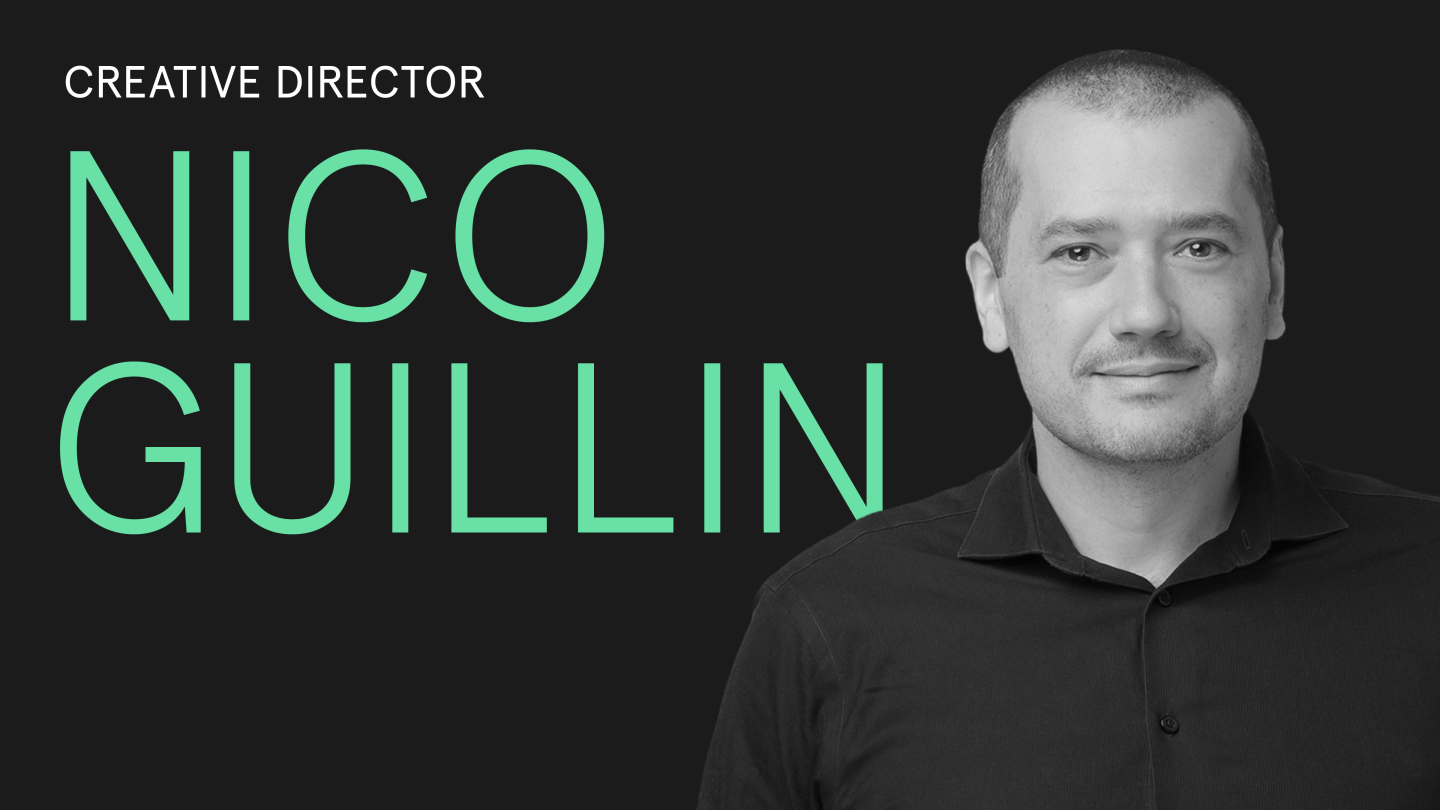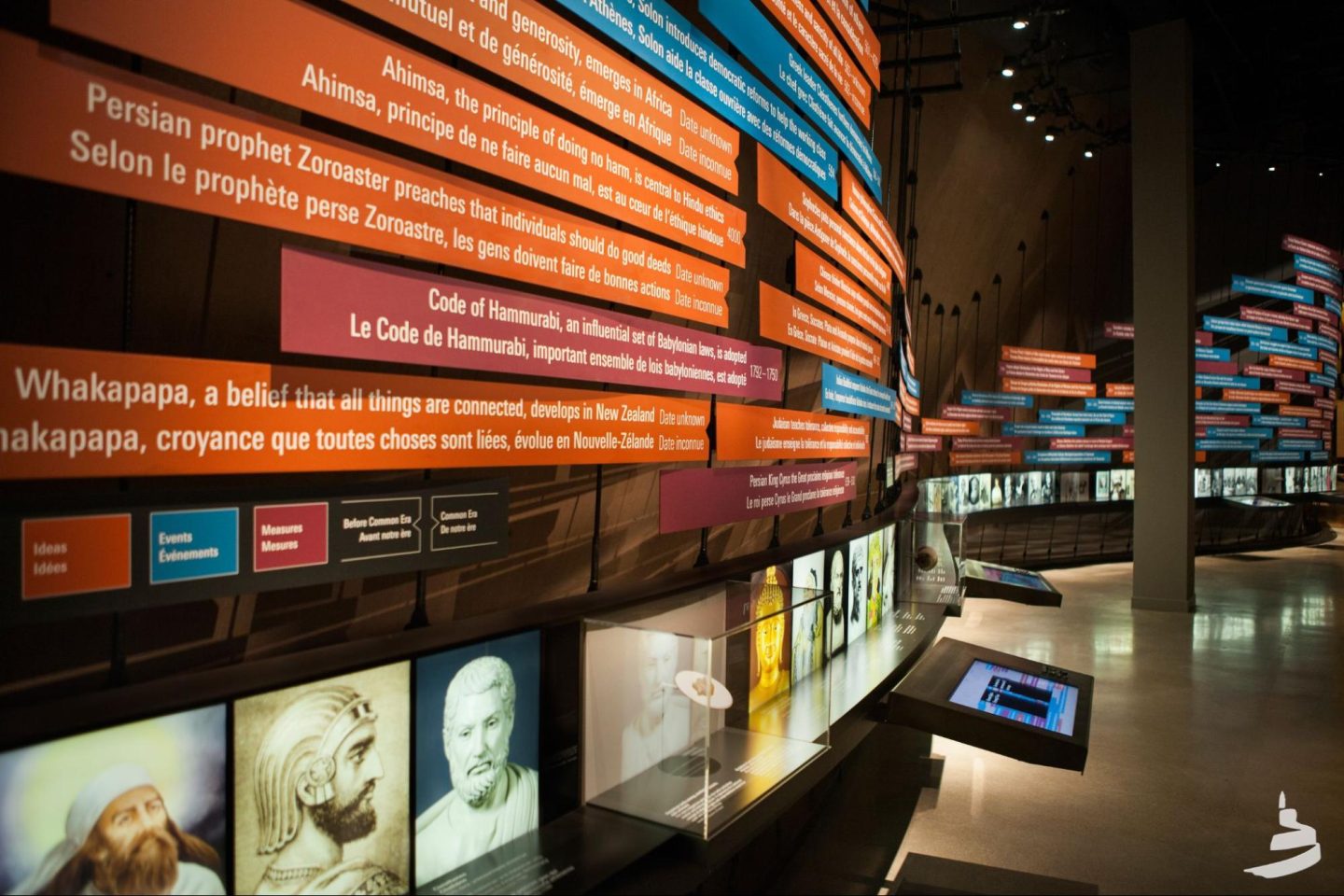Nico Guillin, Creative Director, rejoined Local Projects in 2023 to continue his lifelong passion for telling social justice stories in the cultural space. Nico previously served as LP’s head of Physical Design from 2015-2018. In his first role at LP, he co-established LP’s exhibit design practice and shaped the direction of signature projects like the Hyde Park Barracks Museum and the Legacy Museum.
Meet Creative Director Nico Guillin
An LP and experience design veteran returns to make his mark

Nico’s perspective is informed by a 30-year career in exhibition design. From the Brooklyn Museum in the early 90s, Nico has been at the forefront of the industry including serving in various roles across studios and running his own practice.
We sat down with Nico to learn more about his unique point of view, shaped by a lifelong love affair with exhibition design from an early age.
“I’m not afraid to explore something I haven’t done before – in fact, it’s those opportunities that are most interesting to me, I seek them out – this idea of never doing something twice.”
How did you first come to work at Local Projects?
I worked for a few exhibit designers before arriving at Ralph Appelbaum Associates to develop the Canadian Museum for Human Rights project (pictured).
That’s how I met our founder Jake, who was working as a media consultant on the project. We traveled to Winnipeg together, and as we got to know each other, I realized that my approach to exhibit design was too focused on architecture, not experience. It’s about people ultimately. Additionally, the exhibit world hadn’t reckoned with the emergence of the digital world, and I was eager to be part of that transition.

Jake really wanted to expand from primarily media work to include physical design services, with the ultimate goal of merging media and physical design into a more integrated practice.
When he offered me a position to work on Target Open House, I jumped at the opportunity. The project was, in many ways, ahead of its time.
For one, Target Open House reflects a co-creation model with clients in a way that’s simple and impactful for visitors. Customer feedback helped Target narrow the field from hundreds of IoT devices to a few key products to roll out to stores.
Open House was also highly adaptive. It incorporated architectural features of San Francisco’s signature painted lady residences as a backdrop for media. Inside the multi-room projection space, we were able to test and adapt content over time based on visitor use.
For example, Target originally wanted to tell the story of what a connected home of the future might look like. We made a series of vignettes showing how IoT products might communicate with each other during a morning routine, or feeding a baby at night. But the reality was that products from competitors didn’t work well together (and still don’t). We also heard customers were more interested in how individual products fit into their busy lives, so we pivoted to create a whole new set of vignettes around specific lifestyles, from healthy eating to frequent travel.

What brought you back to Local Projects after five years away?
In my first stint at Local Projects, I built the 3D capability of the studio and was involved in shaping a holistic experience design approach practice. The proverbial three-legged stool: content (always first), architecture / visual design, and creative technology, with visitors at the center.
In my mind, the culmination of that work is best represented by the Hyde Park Barracks Museum in Sydney. It’s one of my proudest achievements, and a perfect case study in how to integrate the three-legged stool of our disciplines, while carefully tuning the emotional and cognitive effects of each exhibit to make an effective whole.
So coming back to LP felt like a pretty logical, natural move, and also an emotional homecoming. LP has changed for the better in subtle ways. More than ever, the company is a magnet for projects with a social agenda, where we can amplify underrepresented voices. That is so important to me.
Creative leadership has also expanded within the studio. Creative directors and discipline directors work in tandem to make sure our staff have the leadership to push boundaries and collaborate effectively, while still having support from their respective disciplines to constantly learn and grow.

How would you describe your style as a creative director?
I approach the work from a place of community, both internally and externally, so that the creative process becomes a process of exchange. I find that we can get lost easily on a project if you don’t have a dialogue with a wide range of people, including our team, client teams, and stakeholders.
Ideally, our work is a careful balance of deep listening and decisive action. I don’t like to work top down, e.g. “Here’s my idea, now go execute it.” I much prefer to use my experience to shape that listening process, and leverage everyone’s passion and talent. Ultimately, it informs the process and guides us as a team through the complex life of a project.
Tell me a bit about your upbringing. What inspired you as a young kid and shaped your interest in museums?
My parents were really young when they had me, barely out of high school. We grew up together, really. It was interesting not to have the usual generational gap between us.
My parents were students – they were still shaping themselves. I gained a lot of independence early and was left to my own devices, exploring what Paris had to offer. That underpins a lot of my natural inclination to explore things I haven’t done before – in fact, it’s those opportunities that are most interesting to me, I seek them out – this idea of never doing something twice.
We went to museums a lot when I was a kid as my mom was studying interior design and getting involved with retail and museums. We would always visit an exhibition twice. First, we’d go without reading anything, completely fresh, and experience it instinctively. Mom really wanted me to have an unobstructed view of the work without having this cloud of curation over our heads. Then, we’d buy the catalog, read all the articles, and go see it again in context.
I developed a sense of intentionality through looking at and processing the world in these moments with her.


I also was influenced by a deep passion for comics, and communicating a narrative in drawing form. My collection was somewhere between 1,200 and 1,500 volumes.
My hero was Jean Giraud, who went by the pen name Moebius. He did a lot of psychedelic science fiction work with Alejandro Jodorowsky, including this amazing work The Incal, which really shaped me.
Drawing was and is the way I process the world.
I went on to attend a really innovative college called Ecole Nationale Superieure de Creation Industrielle, and graduated with an industrial design degree. Our teachers taught us not to accept the design brief, but to always dissect it, to pick it apart, to ensure the problem we were being asked to solve was the right problem to solve, and to have the courage to dissent when needed.
Tell me a little about your early career, including your first few years in Brooklyn?
I finished my Masters Degree in Paris, my son was born (not a combination I recommend), and we came to the Big Apple. I lucked out with a position at the Brooklyn Museum as an exhibit designer. Their team had been depleted and the Museum Director had left, so it was a strange and lucky moment for me. I had no boss and was able to take risks and experiment (like using a 400’ meandering curtain to divide a gallery for a Rodin exhibit). I would do four exhibits a year plus a few installations with their permanent collection. I did that for almost four years, concluding with the exhibition Sensation, a celebration of young British artists from the Saatchi Collection.
From there, I had the opportunity to open my own studio. I always say I’m as grateful for opening it as I am for walking away. It helped me realize that owning a studio was not the way to best express myself. I am a designer at heart, and running a studio takes you too far from design.
“I came to understand the importance, necessity really, of breaking rules to create impact.”
A big influence was interning with Philip Kaufman Studio during the redesign of the Grande Galerie de l’Evolution at the Jardin des Plantes in Paris. We organized the natural history collection around the architecture of the building – animals that live below ground or underwater were placed on the lower levels.
The big move that got media attention was the animal run in the main Hall. That visual of all these species marching together is so powerful – it looked like Noah’s Ark was spilling out onto the exhibit floor. We opened in 1993, and it still looks so relevant today!
Helping to make that design choice not to organize content by species or region and instead create that huge, seemingly unruly herd of animals as the signature focal point was a pivotal moment. I came to understand the importance, necessity really, of breaking rules to create impact.


